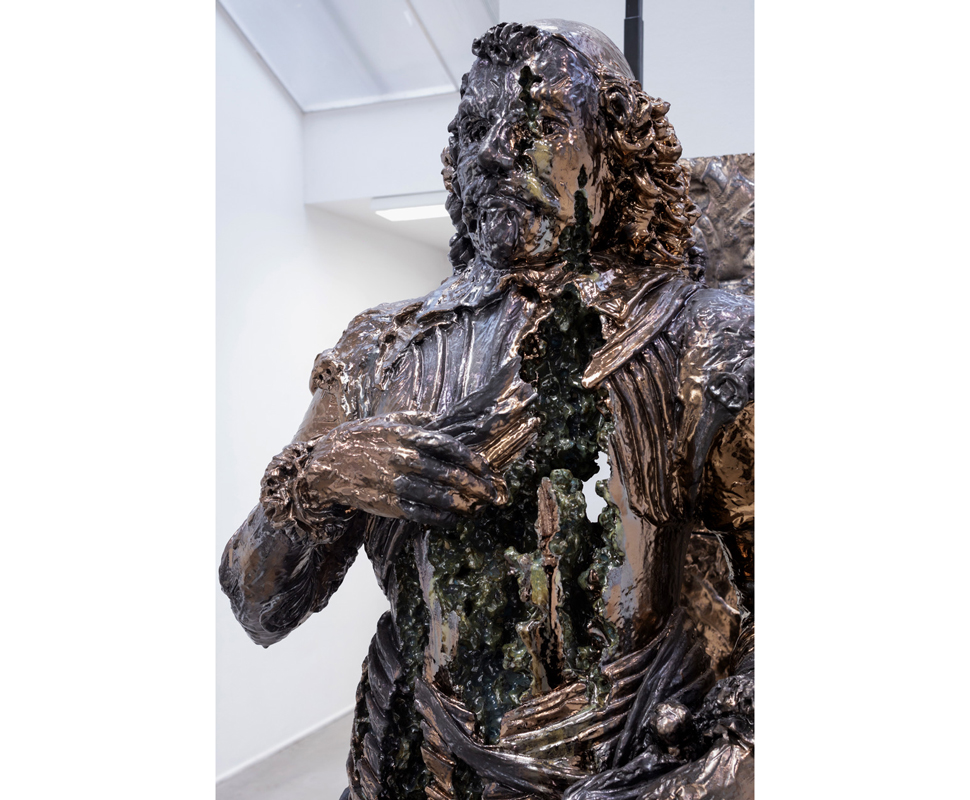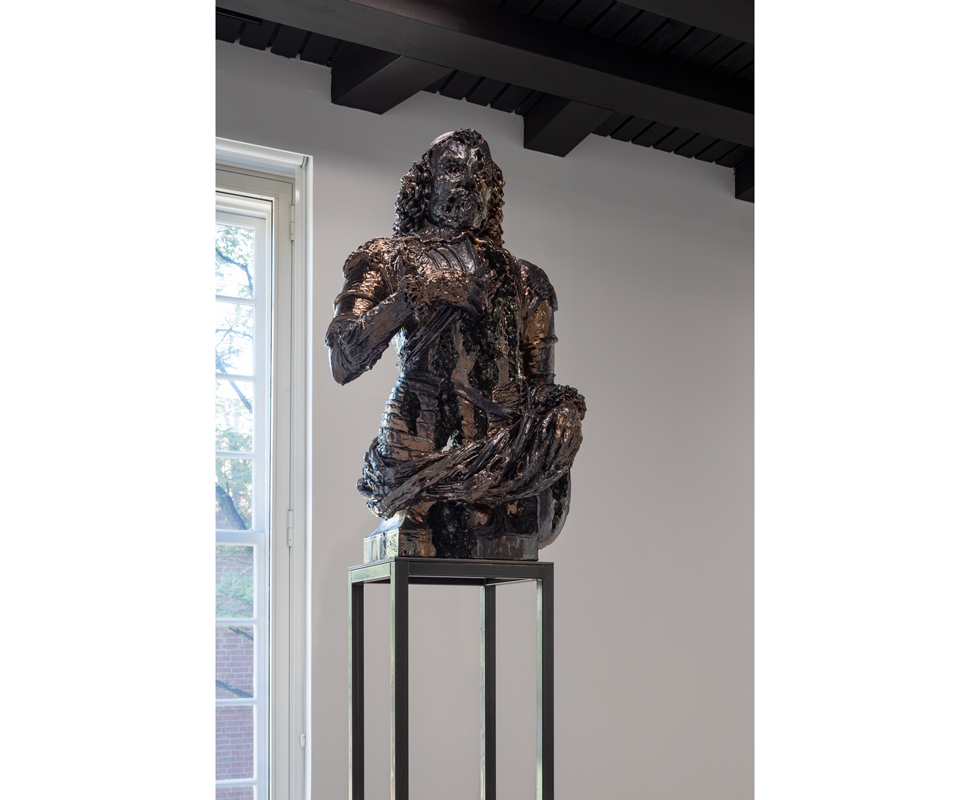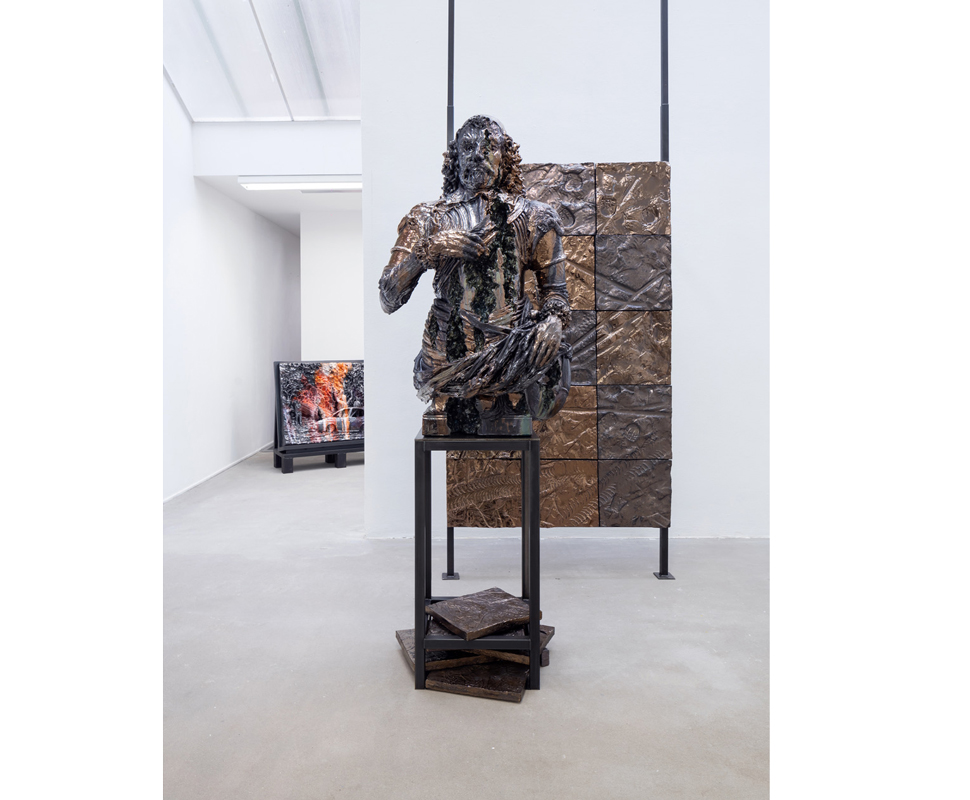A fragile monument of a bygone past: Anne Wenzel’s bust of Johan Maurits in Sculpture Park
"What do we do with all those statues of controversial historical figures from the past?" Anne Wenzel asked herself. This dilemma was the starting point for her project House of Fools. During Art Rotterdam, from March 28 to March 30, 2025, at Ahoy Rotterdam, AKINCI Amsterdam will present the bust House of Fools (Johan Maurits) in Sculpture Park. Wenzel is fascinated by the way we interact with the monuments of our "heroes" from the past in the present day. Her House of Fools series is a response to the recent destruction of statues, in which statues of historical figures – due to their contentious pasts – are being pulled down from their pedestals. "With these sculptures, I show the splendour, glory, and majesty of power. With decay. From within, it seems like they have been eaten away or falling apart," says Wenzel. The bust she made of Johan Maurits of Nassau-Siegen is not a tribute to this governor of the former Dutch colony in Brazil. Instead, Wenzel raises the question: what does this statue mean, as we no longer unconditionally regard Johan Maurits as a hero? In doing so, she offers an alternative to the eternal struggle between preserving and destroying monuments.

An absurd request at Art Rotterdam
"Do you want to box against me?" This question was posed to Wenzel by Deirdre Carasso, former director of the Stedelijk Museum Schiedam, at Art Rotterdam 2019. Carasso was tasked with creating a connection between the museum and the city. A boxing match seemed to her a good way to build a bridge between art and engagement. "Why don’t you ask me to create an exhibition? I’m much better in doing that," Wenzel wondered. She accepted the challenge on the condition that, if she won, she would receive artistic freedom in the museum. Wenzel won and, in response to this "absurd" request, she depicted the many aspects of power.

Contemporary iconoclasm
The largest room in the Stedelijk Museum Schiedam was dedicated to the House of Fools series, which consisted of dark gold-coloured ceramic busts. In addition to Johan Maurits, historical "heroes" such as Jan Pieterszoon Coen and Witte Corneliszoon de With were featured, all based on statues that had recently been destroyed, vandalised, or removed. The sculpture she made of De With was purchased by Museum Boijmans Van Beuningen last year. As a sculptor, Wenzel experiences "pain" when witnessing the contemporary destruction of statues. It’s not just the disappearance of statues from public spaces that affects her, but also the fact that the work of her colleagues is being erased. In 2017, the statue of Johan Maurits was removed from the entrance hall of the Mauritshuis. This was done silently, with the statue being unexpectedly moved to the depot. The removal of the statue was seen as a sign of disapproval of Johan Maurits’ alleged involvement in the slave trade. The Mauritshuis decided to present the controversial history surrounding Johan Maurits – namesake of the museum – elsewhere in the museum, but without the statue. The Mauritshuis’ decision aligns with a trend where more and more museums and public institutions seem to choose to remove statues of controversial heroes from the past. Although Wenzel acknowledges the necessity of critically examining our own past, she questions whether such contemporary iconoclasm is the right solution. As a result, she decided to make it her new project.

The tension between decay and grandeur
The bust of Johan Maurits is full of holes, from which a greenish glaze seems to drip. His face is also damaged: "It looks like it’s been bitten by a monster, while other parts appear to have been affected by fire," says Wenzel. The pedestal of the bust is no longer fully intact, threatening to topple over at any moment. At the bottom of the pedestal we see ceramic tiles in which footprints are printed. The sculpture thus seems to reflect its own decay. By damaging the bust, the artist seeks to challenge his impeccable image. Wenzel makes us reflect on how we deal with the memory of this governor, as part of a system of exploitation and oppression. In doing so, she shows that there are alternative ways to engage with the past.
In addition to signs of decay, the grandeur of this controversial historical hero is also emphasized. Wenzel applied a mirrored gold glaze, simultaneously confronting the viewer with their own reflection. However, the artist encountered a problem when the statue did not achieve the golden effect as she intended. The glaze proved highly sensitive to temperature, so Wenzel had to experiment with different firing techniques. At 1080 degrees, the busts remained dull black, but when she heated the kiln further, a golden shine appeared. It was the finishing touch to this series of works. Wenzel shows us: monuments are built with love – even in their decay, they deserve honour and respect.
Written by Martine Bontjes


